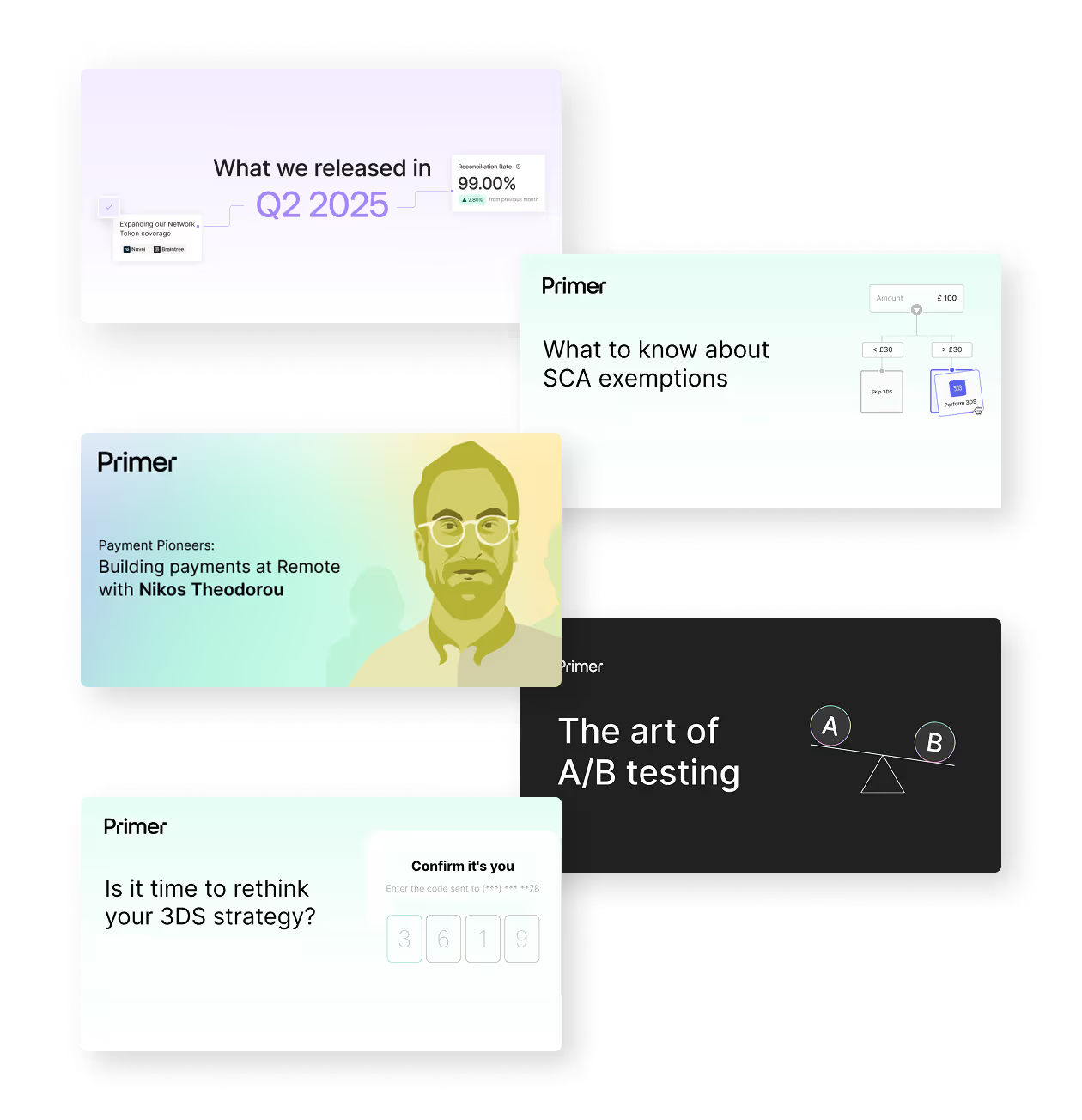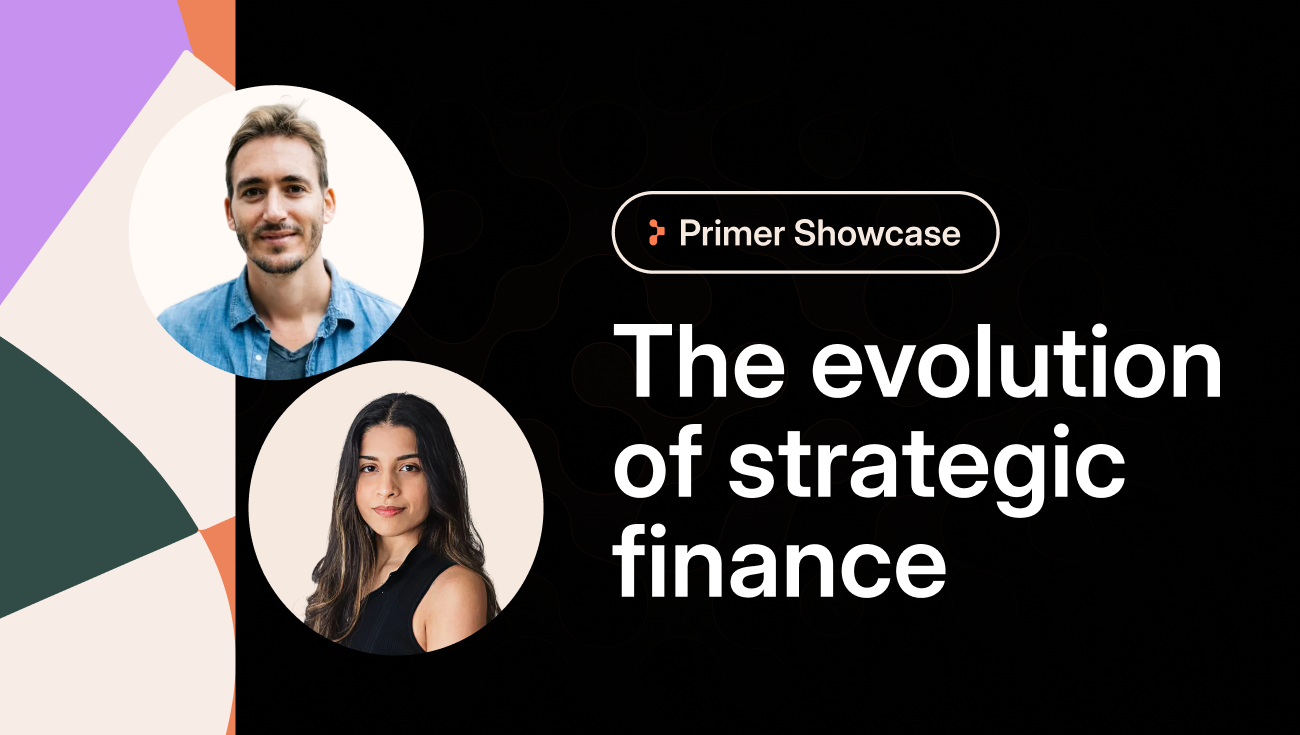It's reasonable to think that offering customers more ways to pay will lead to more sales. Many merchants we speak with here at Primer assume that because over 200 payment methods are available today (and rising), you should offer customers as many options as possible to increase the chance of success at the checkout.
This belief is reinforced by statistics showing that customers are likely to abandon their carts if their preferred payment method is absent.
But here’s the thing: it’s not the number of payment methods that truly matters—it’s how relevant the methods are to a particular target audience and whether you provide a positive payment experience.
In fact, from my experience leading payments at Decathlon, I know there’s a balance between giving customers a choice and overwhelming them with a checkout crammed with payment options.
When we expanded into new markets at Decathlon, we quickly learned that success didn’t come from simply adding every available payment method. It came from analyzing customer behavior, identifying the most relevant options, and ensuring a seamless checkout experience. The same principle applies whether you’re an established business optimizing sales, a startup taking its first steps, or an enterprise fine-tuning payment operations.
In this article, I’ll share insights from my experience on how a data-driven approach to payments—focusing on the right methods, seamless integrations, and customer experience—can help boost conversions, reduce costs, and streamline operations.
Identifying relevant payment methods
Providing a choice of payment methods is a good strategy; however, merchants must consider the relevance of each method and what matters most to customers according to variables such as country or region, consumer age, and buying habits.
Geographical, political, economic, cultural, and other demographic factors affect the payment landscape and determine which solutions are optimum at the checkout for different markets and audiences.
For instance, In the Netherlands, offering iDEAL as a payment option is essential, while PIX is a must for Brazil.
But it’s also important to understand when not to offer certain payment methods. For instance, a common misconception is that Apple Pay and Google Pay have the same impact. In reality, Google Pay sees significantly less usage in most markets. For example, in France, its adoption in 2024 was lower than in 2020, while Apple Pay continues to grow.
The same logic applies to Buy Now, Pay Later (BNPL). At Decathlon, we invested heavily in BNPL because our customers take time to research and compare before making a purchase. Offering BNPL helped them afford larger buys with confidence.
Now contrast that with a grocery retailer in France. Grocery shopping isn’t a high-consideration purchase—it’s a necessity. If I buy bread and ham, I’ll just tap my card. I’m not abandoning my cart because BNPL isn’t available.
Commercial considerations
Even after identifying the right payment methods for your markets, there are still key questions to answer before moving forward with implementation:
- Do you actually need more payment methods?
- Does it make commercial sense?
The first question concerns conversion rates. Suppose you offer cards and PayPal in the UK and see a 97% conversion rate. First, you're doing great. Second, adding another payment method probably isn’t worth the effort—you’re already performing well, and any potential uplift would be minimal.
Contrast that with the Netherlands, where you see a 50% conversion rate with the same options. That’s a red flag. In this case, adding iDEAL—a widely used local payment method—could significantly improve performance.
Every payment method comes with different costs, and choosing the right mix isn’t just about conversion rates but also profitability. Some methods may be more expensive but convert better, while others might have lower fees but slightly lower adoption. The key is finding the right balance.
Take PayPal in the UK. It’s widely used, but instant bank transfers from providers like Open Banking solutions are emerging as a cheaper alternative. While the conversion rate of Open Banking solutions might be lower (for now), their lower transaction fees could make it a more profitable option in the long run. If you successfully shift some traffic from PayPal to an Open Banking option, you might see a slight dip in revenue but a stronger overall margin.
Optimizing your payment mix isn’t just about offering more options—it’s about making smart choices that maximize both conversions and profitability.
Merchants face the challenge of determining the real impact of adding a new payment method only after implementation. Testing a new option typically requires significant development effort—that is unless you use a solution like Primer, which lets them enable or disable payment methods instantly, giving them the freedom to test and experiment.
.avif)
Checkout design
Now, let’s look at presentation quality and ease of integration—two critical factors that shape the overall payment experience. Presentation refers to how payment options are displayed at checkout and their impact on customer experience and conversion rates.There are several things to bear in mind here:
- Order matters: Customers typically notice only the first three or four payment options, so these should be the most relevant. In some markets, it makes sense to highlight gift cards or vouchers first; in others, they should be placed last.
- Device-specific optimization: The checkout and payment methods presented should adapt seamlessly to different channels, whether on mobile or desktop, ensuring a frictionless experience.
- Clear labeling: Payment options should be easy to understand. For example, “Pay in 4” clearly signals an installment option, while a generic “PayPal” label may not.
To get this right, A/B testing is essential to validate assumptions and continuously refine the checkout experience. You may already have the right mix of payment methods; you’re just not optimizing how they appear for your customers at checkout.
How Primer solves the payment method paradox
Optimizing your payment method mix is no easy task. Like most aspects of payments, it involves a lot of guesswork—until you enable a new method and see the real impact.
That’s where Primer comes in. We make adding, configuring, and testing payment methods easy—without relying on additional development resources. With Universal Checkout, you can create custom rules and logic to control which payment methods appear for different customers and when. This gives you the flexibility to experiment, A/B test, and fine-tune your checkout experience, ensuring you always offer the right options in the right way.
But payments aren’t just about adding more methods—they’re about getting them right. At Primer, we focus on the quality of our integrations, not just the quantity, which is often overlooked when merchants evaluate platforms.
A high-quality integration isn’t just about making a payment method available. It ensures smooth processing across settlement, reconciliation, fraud checks, and authorization capture. Many platforms offer basic support for payment methods, but without deep integration, merchants may encounter higher failure rates, inefficiencies, and operational challenges.
That’s why choosing a payment infrastructure with real substance is important. Some platforms claim to support every payment method, but if they can’t handle payment processing from end to end, they won’t deliver the results you need.
Just like adding every payment method won’t guarantee success, choosing a platform with the longest feature list won’t necessarily solve your challenges. The real impact comes from a thoughtful, data-driven approach—one that prioritizes relevance, seamless integration, and an optimized payment experience. With Primer, you get a platform built for scale, resilience, and long-term success.




(1).png)
.png)